The Best Bike Locks 2017

The classic Kryptonite bike lock has long been the standard, but the best bicycle lock may no longer be the classic U-lock. New high-tech bike locks now come in an increasingly diverse range of shapes and sizes, from zip ties to smart locks. To help you navigate the new world of bike locks, SI decided to take a look at some of the most innovative new designs.
Buying a bike lock is a tradeoff between convenience, style, and security. Given time and the right tools, even the biggest, bulkiest locks can be broken, and a lock’s invincibility doesn’t matter if it’s too complicated to use or too heavy to carry. And the world has gotten too big and mean not to lock your bike when you dash into the store.
With the help and advice of an inventor, a bike messenger, and a cop, SI set out to find the best new bike locks on the market. We pulled, and prodded, and generally tried to break our way through a range of novel designs on the streets of the Bay Area. We discussed and analyzed crime statistics, and, perhaps most importantly, we talked about fashion. Because there’s no point owning a bike lock if you wouldn’t be seen dead riding around with it.
Anyone with a bike needs to think about bike security, but locks only make sense for low to medium value bikes. Leaving, say, a $10,000 carbon-fiber road bike anywhere in public view is just too risky. Another factor in bike security is how and where a bike is locked up. Locking a bike simply to itself, or just one of the wheels, rather than the frame, to a rack can result in theft even if the lock isn’t broken. Securing a bike in an out-of-view spot provides a thief with a quiet place to spend time breaking a lock.
Below, we’ve picked out a handful of our favorite designs from the startup world of bike locks, including our top pick, the TiGr mini+, and other options from Hexlox, Hiplok, Foldylock, LINKA and Ottolock. And we’ve set them against perhaps one of the most secure U-locks on the market, the Kryptonite New York Fahgettaboudit.
Our top picks
The Best: TiGr mini+
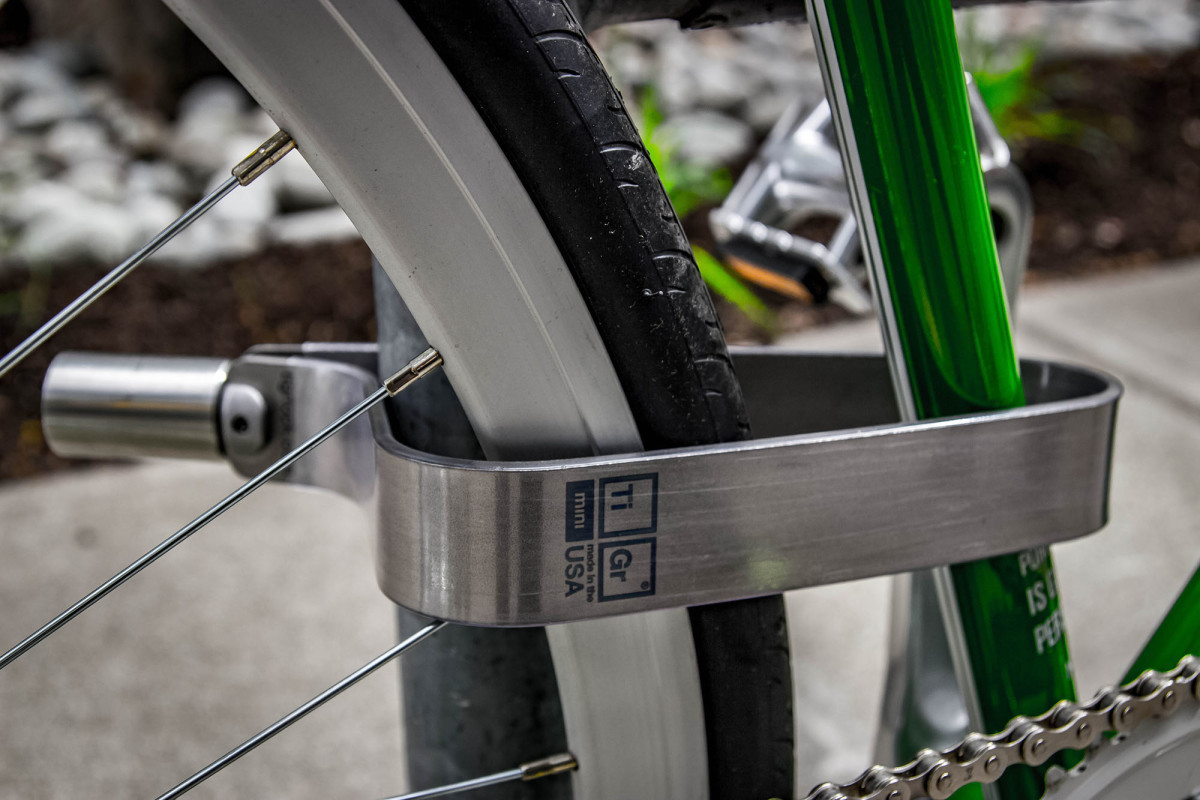
TiGr mini and TiGr mini+ available at tigrlock.com, amazon.com, $99 and $135
The TiGr mini+ bike lock is effectively a spin on the U-lock design. Instead of a U-shaped metal bar, the lock has is a 1.25-inch band of titanium that inserts into a cylindrical locking mechanism. When unused, the lock can by secured in a clip attached to the water bottle mounting points present on most bike frames.
The lock is surprisingly light, weighing in at 16.5 ounces, and has an eight by four inch locking area, which should be enough to wrap around most bikes and bike racks. Overall, the design is attractive and easy to use. The mechanism is opened by a key, but can be locked by push button. The newly released mini+ is a slightly larger version of the existing TiGr mini, and retails for $135.
In 2013, a German consumer group published a video showing how easy it was to break an earlier 0.75-inch model with a pair of bolt cutters. All newer TiGr versions now have a wider band that make them harder to cut through, but given enough time with bolt cutters, a power saw, or a drill, the TiGr mini+ can be broken. This just proves that no lock is invincible, and unlike some more complicated, uglier, and heavier designs, TiGr mini+ passes the test that it is likely to be both carried and used consistently.
The Next Best: Hexlox
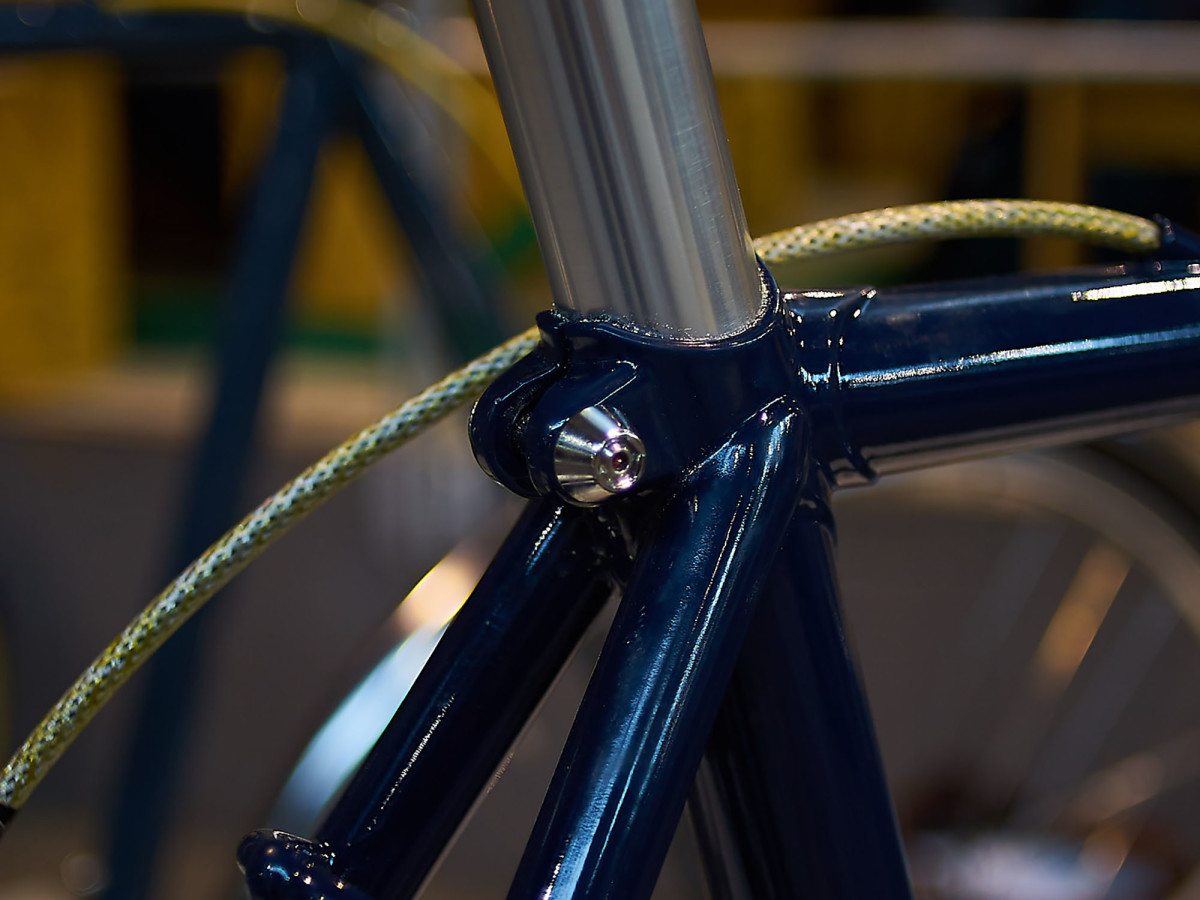
Available at hexlox.com, €54.99 (about $60) for set of five
The Hexlox bicycle lock is not a complete solution, but it makes a perfect compliment to a bigger lock. Hexlox are tiny metallic plugs that fit inside the hex key bolts used to secure many components—seats, wheels, handlebars, and the drive train—to bikes. They work pretty simply by blocking a thief from using an Allen wrench to loosen the bolts and remove the components.
Because one side of each Hexlox is a magnet that holds the plug inside a steel hex key bolt., aluminum or quick release bolts need to be switched out with steel to accommodate Hexlox. On the other side ofa Hexlox, the one that faces outwards, is a tiny red cone that works as the lock. Only a key with a correctly shaped recess can be used to grip and extract the plug, which is otherwise difficult to remove, even with a strong magnet. Hexlox currently come in 4mm, 5mm, and 6mm diameters—the three most common size hex key bolts on bikes—and weigh less than 0.02 ounces. A set of five, with a matching key, retails for €54.99 (about $60).
Like any locking mechanism a Hexlox can be broken. A power drill will bore a hole all the way through a Hexlox, but stripping expensive bike components from a frame would be a noisy and slow process. Assuming the frame itself is secured to a fixed object using another type of lock, and the bicycle is locked up in a busy public area, Hexlox should be a good deterrent to component theft.
More bike lock options
Hiplok Lite
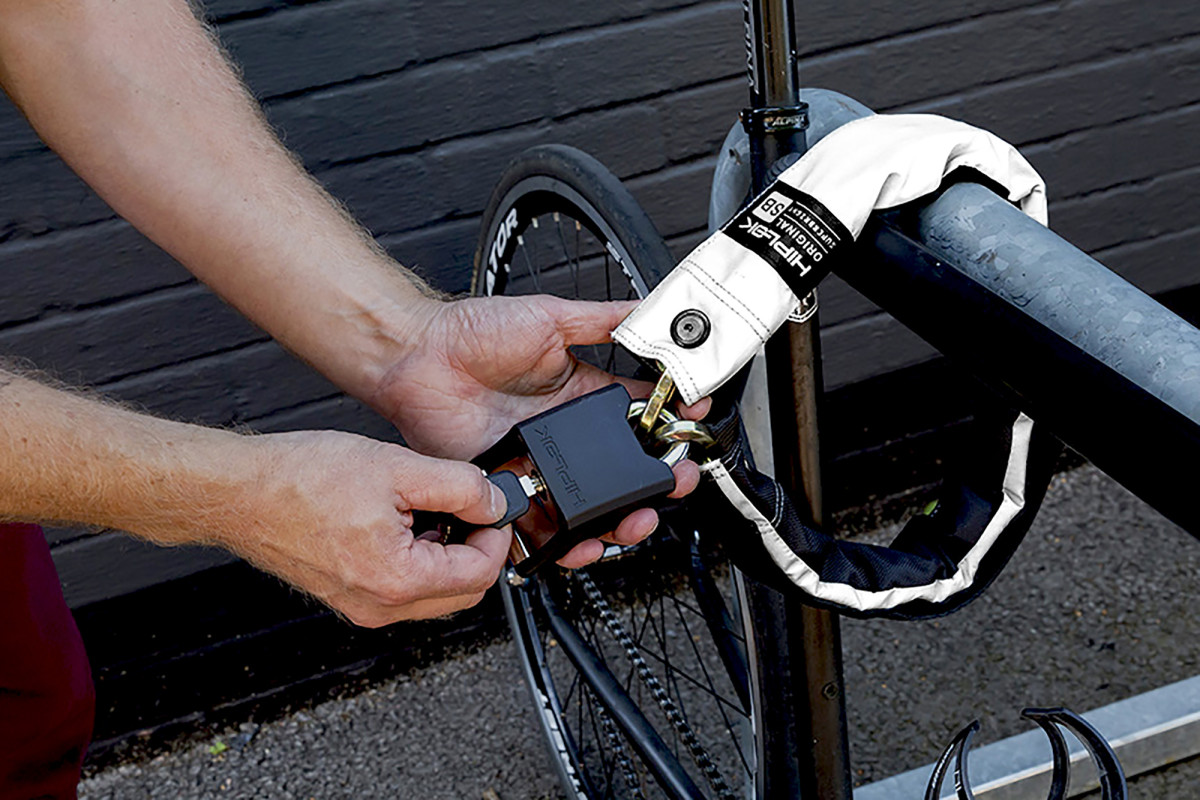
Available at amazon.com, $65
The Hiplok Lite bike lock is a metal chain wrapped inside a fabric sleeve. It can be looped around a bike and rack and locked with a padlock, or worn like a belt when not in use. Additionally, the fabric is made of a material that reflects light, so wearing the belt improves your visibility on the road at night.
Some riders already carry chains to lock their bikes, but Hiplock makes wearing a chain a little easier and safer. The fabric sleeve has a strap that fits through a loop and is secured by Velcro, turning the chain into a belt. The downside is that some riders might find having to wear the lock, rather than attach it to their bike, a little cumbersome.
Chains are difficult to break because links need to be cut in two places. Wrapping Hiplock’s chain in fabric also makes getting a good grip on the chain with bolt cutters difficult, although the weak link, and easiest access point, might be the metal loop of the padlock.
Foldylock Compact
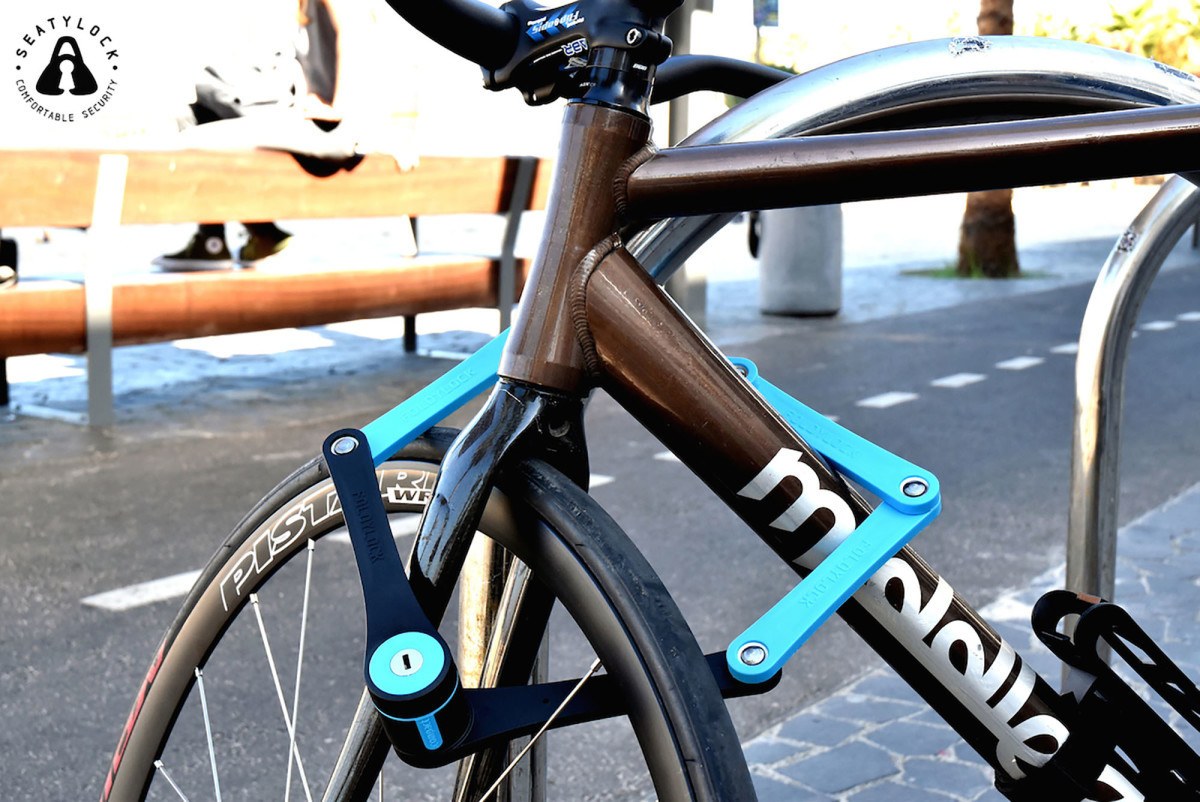
Available at amazon.com, $95
Foldylock Compact lock is made from a series of six plastic coated flat metal bars that are hinged together and unfold into a loop. At first glance it looks a little confusing to use, and induced a little of that panic that arises when trying to fold a map, but the design slides back together easily.
The lock and hinges all feel robust and well made. The metal bars are tough to cut through, although the metal rivets at the hinges are not hardened steel, and can be worn through using a power drill.
The company, Seatylock, also makes a product line where the foldable portion of the lock wraps up into a custom seat. That is a clever idea, but is complicated to use, and requires removing the seat to lock, and re-installing it to ride, which will frustrate riders who might have to do that many times a day.
Kryptonite New York Fahgettaboudit Mini
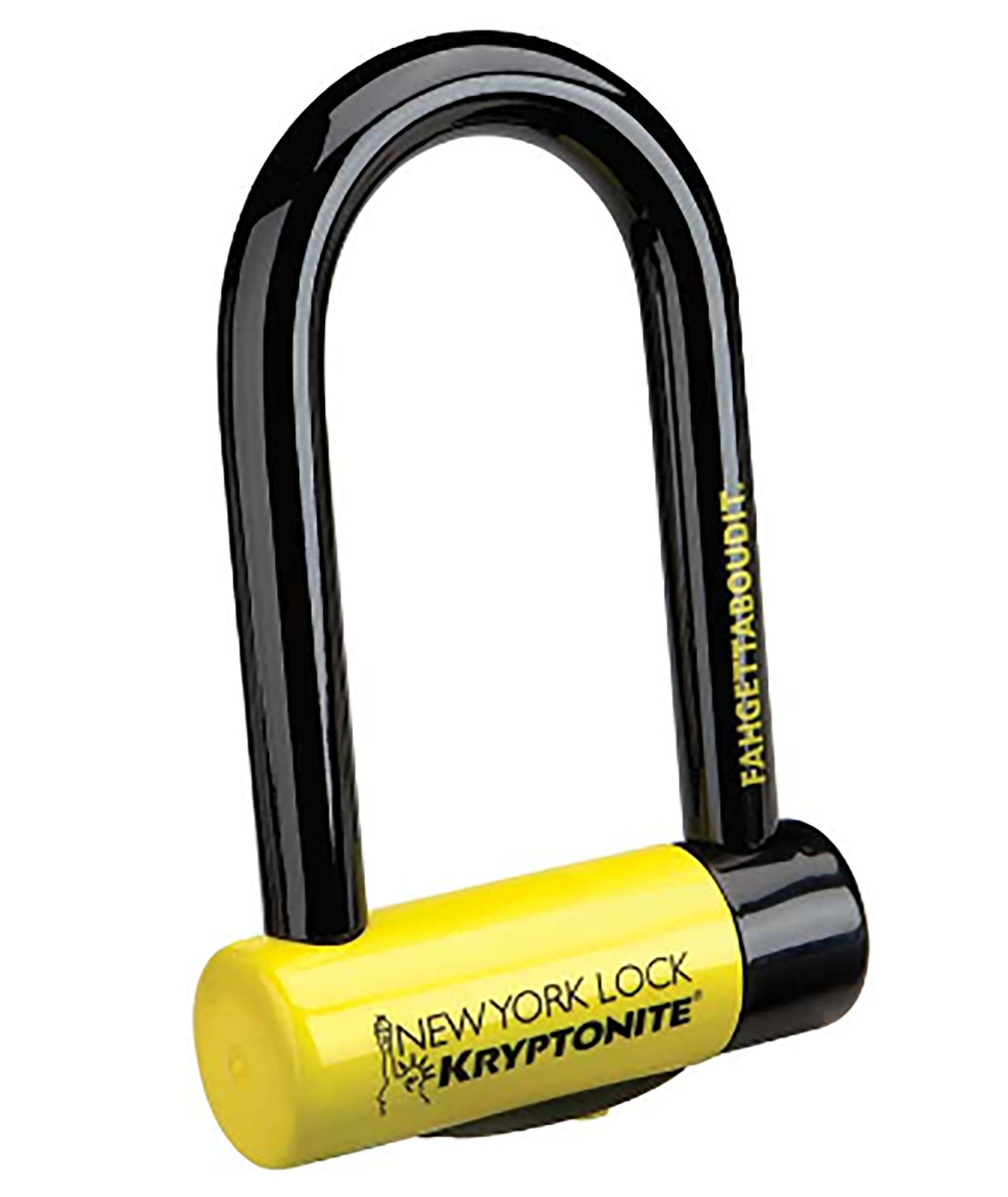
Available at amazon.com, $102
The Kryptonite New York Fahgettaboudit Mini is a heavy duty U-lock made from vinyl-coated, thick steel. It is designed to lock a bike for extended periods of time. Kryptonite offers a lifetime warranty and will cover bike theft up to $4,500 if a thief breaks a registered lock.
This Fahgettaboudit’s security value is hard to question. It is made from hardened steel, with a 0.7-inch thick U bar, has a protecting sleeve over the crossbar locking mechanism, and it uses double dead bolts.
However, this is not really a lock you’d want to carry around with you. Although it is a mini version, it tips the scales at twice the weight of any of the other locks we tested—Kryptonite also makes lighter, less robust U-locks not mentioned here—and that alone might deter a rider from carrying it.
LINKA
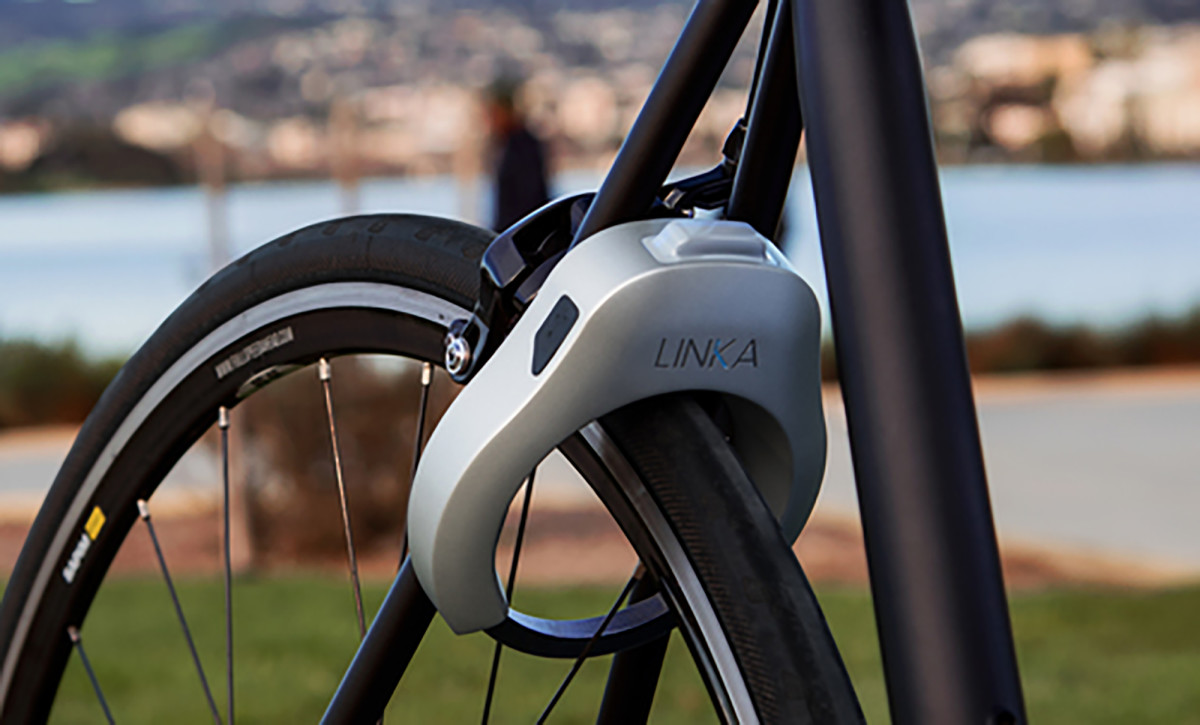
Available at linkalock.com, amazon.com, $129
The Linka is a smartphone controllable device that locks the rear wheel to the frame, preventing a bike from being ridden. It also has a 100-decibel alarm that will sound if someone attempts to tamper with the lock, and can send alerts to the user’s phone via its app.
Making a lock smart is a clever idea. Not only can it alert you to theft, but it can even automatically unlock itself when you’re about to jump back on. However, the drawback of linking it to your phone might include problems pairing with Bluetooth and the possibility of a stolen phone, meaning that person might also be able to take your bike.
The lock’s alarm triggers if anyone attempts to bend or break the sliding bolt, which should act as a good deterrent to thieves trying to open the lock in a public place. But while locking a bike’s back wheel prevents it from being ridden, Linka is not designed to lock a bike to a rack. A determined thief could still pick up the bike, and load it into a truck. Though that will also trigger the alarm, if the bike is expensive, that might be worth the risk.
Ottolock
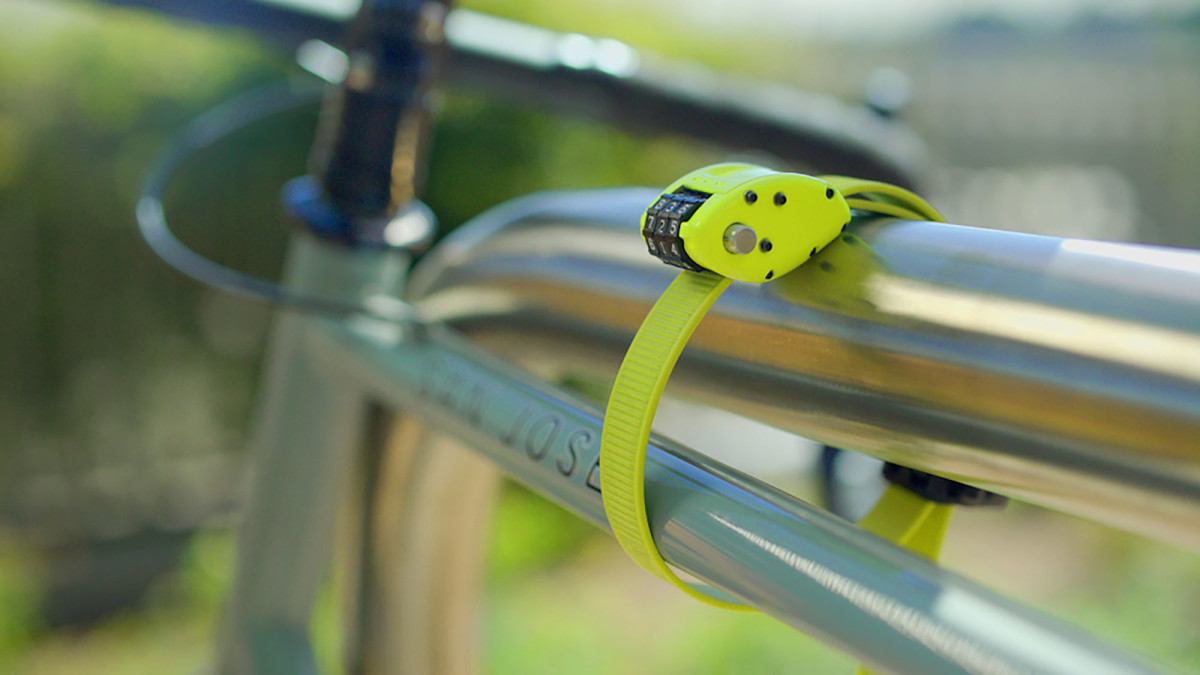
Available at ottodesignworks.com, $50
The Ottolock looks like a large zip tie, and it can wrap tight to just a 3” coil you can throw in your bag. The end of its 0.75-inch plastic band can be threaded through a combination lock to form a loop around a bike and rack. Inside the band are layers of Kevlar and stainless steel.
Though the plastic band looks relatively easy to cut through, the combination of Kevlar and multiple thin bands of flexible steel make it surprisingly tough to cleave, even with bolt cutters. The toughness makes Ottolock pretty good at protecting your bike, but the appearance might encourage theft attempts, damaging, but not breaking, the band. If the bike is locked out of sight, the easier option for a thief might be simply cracking the three-number combination lock.
Our experts
To evaluate the range of lock innovations, SI turned for advice to a trio of experts: an inventor, a bike messenger, and a cop. Kent Frankovich is the founder of Revolights, a company that builds lights that make your bike look like something out of the movie Tron. His Emeryville, Calif. office is filled with bikes, tools, and 3D printers. When Chas Christiansen isn’t racing fixed-gear bikes professionally, he speeds packages around the streets of San Francisco. “Every time you leave your bike you have to lock it up,” he says. And he does that hundreds of times a day. The police officer asked not to be named, but she has more than 30 years of experience dealing with bike thefts in the Bay Area. On duty, her team locks its bikes using handcuffs. Regardless of the type of lock, she says, “just know that you can’t be away from your bike for more than 10 minutes.”
The testing method
The different designs were evaluated by locking up an old bike to a rack on a street in Emeryville, donning safety glasses, and then, with the help of Frankovich, attacking them with a range of tools. That list included a paper clip, wire cutters, bolt cutters and a power drill. The intention wasn’t to break every lock, but simply to understand what sort of tools and effort would be required for each. As if to demonstrate how risky it can be to leave an expensive bike unattended on a public street, no passersby questioned or seemed to pay any attention to the two people hacking and drilling through bike locks.
